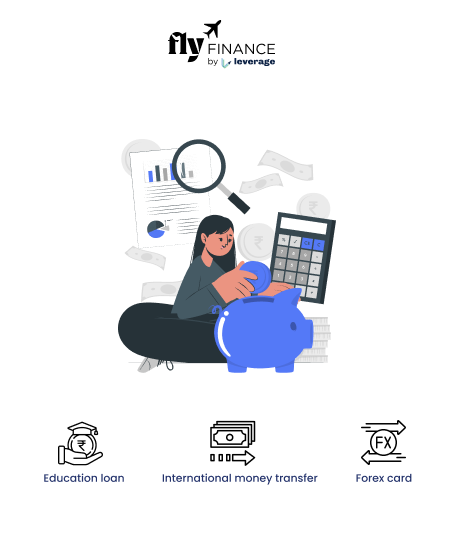Automated Clearing House or ACH is one of the most popular methods for transferring money electronically from one bank account to another. ACH transfers offer a convenient and cost-effective way to move funds between bank accounts. ACH can be used for various transactions like direct deposit of paychecks, monthly or annual debit towards a loan or any other payout, interest credit etc.
However, the benefits of ACH are very different from the benefits of Wire Transfer so you don’t need to get confused between the two. Let’s understand in detail about ACH, its uses and applications, process, merits and demerits.
Table of contents
What is ACH Transfer?
ACH is an Automated Clearing House, which is one of the most convenient modes of electronic funds transfer in the US. An individual can transfer funds from one bank to another over the ACH network. These transfers include transactions made to people, payment of bills, or direct deposits.
ACH transfers are also commonly used for making transfers related to payrolls, unemployment payments, social security benefits, and tax refunds or payments. There are different types of ACH transfers-
ACH Debits- The recipient initiates the transaction and pulls funds from the sender’s account. This is typically used for auto bill payments and subscriptions.
ACH Credits- These are initiated by the sender, who transfers funds to the recipient’s account. This is commonly used for things like reimbursements or refunds.
ACH Direct Deposit- These are used for payroll, government benefits, tax refunds, and other recurring payments. This type of ACH transfer enables employers or entities to deposit funds directly into an individual’s bank account.
ACH Direct Payments- These allow authorized entities to withdraw funds directly from a consumer’s checking or savings account for bill payments, subscriptions, or other regular expenses. Individuals, organisations, and businesses use these to make direct payments.
Also Read: Let’s understand all about the Liberalised Remittance Scheme in this blog, which allows Indian residents to remit (transfer) money abroad for diverse reasons.
ACH E-Mandate for Transfers
ACH network facilitates electronic transactions between banks or financial institutions. ACH transfers are electronic funds transfers that allow you to move money from one bank account to another, whether it’s for personal or business use. These transfers can be used for various purposes, such as direct deposits, bill payments, and even person-to-person transfers.
To initiate the movement of funds through ACH you need to activate the ACH e-mandate initiated by the concerned merchant. Once you activate the mandate for a particular transaction the money will be moved directly to the concerned party without any further commands. In other words, the ACH e-mandate allows you to make regular payments without manually initiating the transaction for the same.
For example- if a student has taken an education loan, the ACH e-mandate allows the deduction of loan EMI and corresponding credit to the lender’s account.
ACH Fees
ACH fees are charged by banks and financial institutions as a service fee. Unlike other modes of transactions, these charges are not much. Usually, these charges differ from bank to bank.
- ACH Charges in SBI Bank are INR 50 plus the GST.
- ACH Debit Return Charges in HDFC Bank are INR 500 plus taxes.
- ACH Charges in ICICI Bank are INR 500.
How ACH Transfer Works?
ACH transfers involve certain steps in a transaction in order to transfer the funds to the beneficiary. After initiating the transaction the bank asks you to authorise the same through its secure portals. When you accept the mandate it then gets processed by the bank. Let’s understand each step involved in it:
Initiation
ACH Transfer is required to be initiated by the sender. At this step, you need to create the mandate and authorise it. This can be done through various channels, including online banking, mobile apps, or through a payment service provider. If you are availing any loans or advances from another bank or financial institution then they may redirect you to the bank’s website in which you will accept the mandate.
When you perform an ACH transfer you need to fill in all the necessary information, such as the recipient’s bank account number, remarks, the amount to be sent, and the purpose of the payment. This information is used to create an ACH entry. In order to open this portal you need to login through your net banking account credentials.
ACH Processing
Once the ACH entry is created, it is submitted to the ACH network. The network then processes the transaction, verifying the account details and checking for any potential issues. At every step, you need to provide one-time passwords if you are doing transactions through online banking. You can also use your ATM-cum-debit card or Virtual/UPI ID details to authorise the transaction and get it processed.
Settlement
ACH transactions are typically settled in batches, rather than in real-time, just like NEFT. However, the time frame is quite different from NEFT transactions. In this, the transactions are grouped together and processed at specific intervals, usually once a day. The settlement process involves transferring funds from your bank to the recipient’s bank. You will get a debit message from your bank and credit confirmation from the beneficiary. Remember that you need to maintain sufficient funds in your account while performing ACH transfers. If an ACH debit attempt is made by the bank and the account doesn’t have sufficient funds then you may have to pay extra charges and your credit history/CIBIL score might be affected.
Confirmation
After the settlement process is complete, both the initiator and the recipient receive confirmation of the ACH transfer. This confirmation may be in the form of a transaction receipt or an entry in their bank statement. Usually, the bank shares all such information through SMS, or e-mail. In case you did not receive any communication from the bank regarding it then you should contact your bank immediately.
Also Read: Explore the RBI Restructuring 2.0 Scheme FAQs: eligibility, loan types, application process, credit score impact and more.
Benefits of ACH Transfer
ACH Transfer allows you to make hassle-free transactions with almost zero fees subject to the terms and conditions. You just have to authorise the mandate and the bank will take care of the rest. Let’s understand some of the major benefits of ACH Transfer:
Advantages of ACH Transfers:
- Cost-Effective Transfer: ACH transfers are often more affordable than other payment methods, such as wire transfers or cheque payments. Many banks and financial institutions offer ACH transfers at little to no cost. In some cases, ACH transfers are the only available mode of payment offered by the beneficiary due to its multiple benefits.
- Convenience: ACH transfers can be initiated and scheduled online, making them convenient for both individuals and businesses. Recurring payments, like monthly bills, can be automated through ACH. You just need to log in to your net banking account and set the mandate for transfers. You can also cancel the mandate at any time subject to the terms and conditions of the bank.
- Security: ACH transactions are subject to stringent security protocols to protect against fraud and unauthorised access. This makes them a secure way to transfer money. There are multiple steps involved while setting up and authorising an ACH bank transfer.
- Speed: While ACH transfers are not as instant payment systems as other modes such as UPI and IMPS, they are still relatively quick, with funds typically clearing within 1-2 business days. For automated payments like EMIs, ACH network transfers are the best-suited mode as you don’t need to do anything once you authorise the mandate irrespective of the tenure of regular payments.
Also Read: If you are coming back to India after your International travel and left with foreign currency, then check this blog on How to Exchange Foreign Currency to Indian Rupee?
FAQs
ACH is an Automated Clearing House, which is one of the most convenient modes of electronic funds transfer in the US. An individual can transfer funds from one bank to another over the ACH network. These transfers include transactions made to people, payment of bills, or direct deposits.
There are different types of ACH transfers including ACH debits, ACH Credits, ACH Direct Payments, and ACH Direct Deposits. Each type serves a unique purpose.
An ACH e-mandate allows for a particular transaction the money will be moved directly to the concerned party without any further commands. In other words, the ACH e-mandate allows you to make regular payments without manually initiating the transaction for the same.
ACH transfer is used to process direct payments or deposits. The transaction in ACH is completed through a clearing house. On the other hand, you can make direct movement of money through wire transfers from one bank account to another. ACH are mostly free but Wire Transfers are chargeable.
Monthly payouts to employees, EMI debit etc are some examples of ACH.
Both ACH and ECS (Electronic Clearing Systems) are modes of automated electronic fund transfers.
ACH transfers have revolutionized the way we move money in the digital age. It is an affordable, convenient, and secure mode of payment which makes it a popular choice for individuals and businesses. Whether you’re paying bills, receiving payments, or simply transferring money between accounts, ACH transfers offer a reliable and efficient solution.
To know more about the payment modes, the best international bank accounts for students, forex and banking experience for global students or international money transfers, reach out to our experts at 1800572126 to help ease your study abroad experience. Follow our social media handles on Twitter, LinkedIn and Instagram.





























